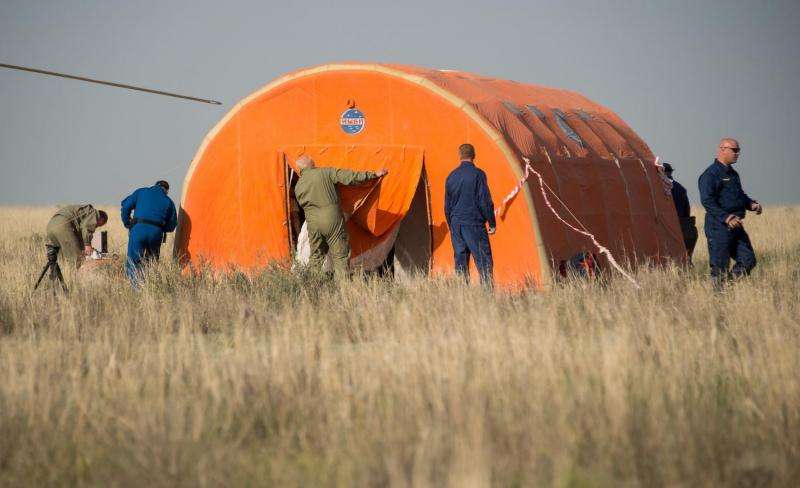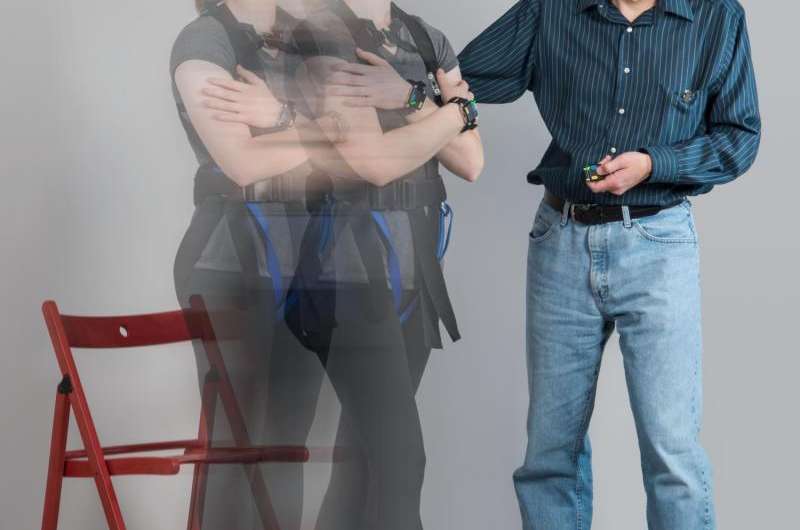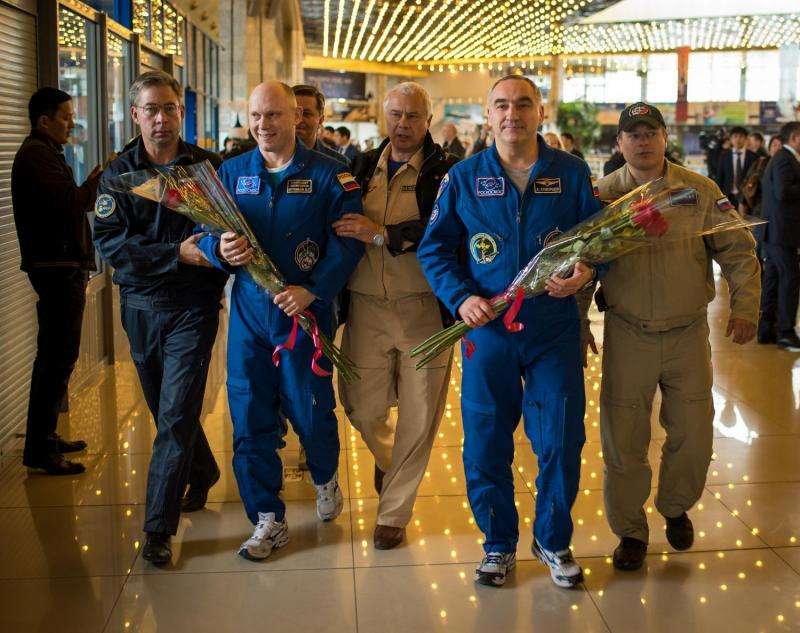Living in space—and on Earth—is a balancing act

According to doctors, sometimes the best treatment for what ails you is rest. A new joint investigation by NASA and the Russian Federal Space Agency (Roscosmos) may challenge that notion.
As we age, we expect to slow down and take a bit more time to do things. But patients who have recently undergone surgery are often asked to move gingerly during recovery. In both cases, people can experience a variety of physical challenges, including problems with vision, balance, coordination and even blood pressure. Simple tasks such as getting up and walking to answer the door can be strenuous and take a bit more time.
Balance and coordination issues also are challenges for men and women who may be in perfect health, but have spent six months or more on the International Space Station in the unique environment of space.
The Recovery of Functional Sensorimotor Performance Following Long Duration Space Flight or Field Test investigation will measure the time and effort it takes astronauts to perform simple tasks before they launch into space and compare them to measurements taken immediately after they return to Earth. Researchers are using this investigation to look for new and better ways for space travelers to recover faster from prolonged missions. Potential treatments from the study may also help people on Earth experiencing similar symptoms.

"We call the investigation Field Test because that is literally what we will do to acquire data," said Millard Reschke, Ph.D., chief of neuroscience at NASA's Johnson Space Center in Houston. "Returning crew members from the International Space Station are literally tested in a field on the steppes of Kazakhstan in Asia immediately after they land. We measure time and kinematics using special sensors located on all moving body parts, assess strength, post-flight motion sickness and cardiovascular function in the astronauts while they perform a number of basic activities including standing from a sitting position, standing from a prone position, walking a straight line, even just standing upright for three minutes."
These activities or exercises are performed three times within 24 hours of landing and then again several times post-flight. Measurements are compared to baseline data taken before their mission. Not a single measurement or exercise supporting the investigation is conducted during flight. Everything is performed on the ground, but comparing the pre- and post-flight numbers will help acquire data that could affect life on orbit.
When Russian cosmonaut Gennady Padalka returned from his six-month stay on station on Sept. 11, he will complete 15 tests measuring his sensory motor system. Fellow Expedition 43 crew members—NASA astronaut Scott Kelly and cosmonaut Mikhail Kornienko, who are part of the Year-long Expedition study and will spend 12 months on the orbiting laboratory—will perform the full complement of activities when landing in March 2016. Scientists will share data on both sides of the ocean.

"This is a unique collaboration nearly 20 years in the making," said Dr. Inessa Kozlovskaya, Russia's principal investigator on Field Test. "No one has attempted this kind of study before. After a typical Soyuz landing, the crew members were quickly evaluated and then flown back to their respective countries. We will break this mold by testing motor functions of all crew members immediately after landing, regardless of nationality, and share this data with each other."
Sometimes the performance of the test itself can help in recovery, immediately exercising those parts of the body and brain that haven't been used in months. Scientists and investigators are not only measuring these differences for individuals, but also will compare the recovery rates between various crew members.
"Some of our astronauts re-adapt to our gravity faster and better than others," said Reschke. "If we can learn why this happens, we can introduce new exercises or pharmaceuticals to help recovery, which could be of use with our aging population or people recovering from surgery."
Provided by NASA




















